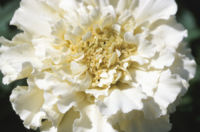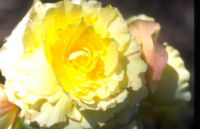Carnation
From Giftypedia
The Carnation is considered January's flower, a floral symbol for the 1st Anniversary of marriage, and is the official flower of Mother's Day.
History of the Carnation
The carnation is one of the oldest cultivated flowers dating back to Ancient Greek and Roman times. The carnation was used for art and decor and was also used in Greek ceremonial crowns. The scientific name of the carnation is Dianthus caryophyllus, where Dianthus roughly translates to "flower of love" or "flower of the gods." The carnation is known for it's ruffled ball shaped bloom, it's fragrance and for the longevity of the bloom.
According to legend, the carnation was discovered by King Louis IX in Africa and used it as a medication against the plague. In the middle ages it symbolized fertility. Later the flower became the flower of the ‘working class’. In England the Catholic church adopted it as the symbol of the Virgin Mary, and the crucifixion of Christ.
In the late 20th century the carnation became the official flower of Mother's Day.
Color Meaning of Carnations
In early times, carnations were typically found in pale pink and peach. Today there is a wide variety of colors, and like the rose the color of the carnation expresses different sentiments.
| Color | Meaning |
|---|---|
| Light Red | Admiration |
| Dark Red | Love and affection, passion and respect |
| White | Purity and luck, innocence and pure love, women's good luck gift |
| Pink | Gratitude, reminiscence, perfect happiness and thankfulness |
| Green | for St. Patrick's Day |
| Striped | Symbolize regret that a love can not be shared, refusal |
| Purple | indicate capriciousness, whimsical, changeable |
| Yellow | rejection and disdain |
| Mauve | dreams and fantasy |
Related Articles
- Monthly Birthstones
- Monthly Flowers
- Monthly Zodiac Signs
- Anniversary Flowers
- Anniversary Table
- Dating Anniversary Gifts
- Anniversary Gemstone Table
- Tips for Giving Flowers as a Gift
- Color Meanings of Flowers
- Traditional Flower Meanings




 Printer Friendly
Printer Friendly
